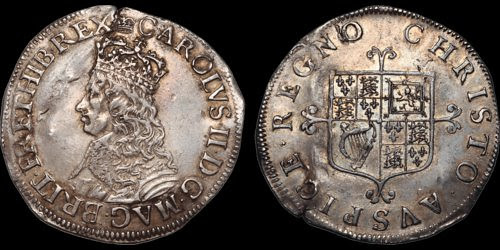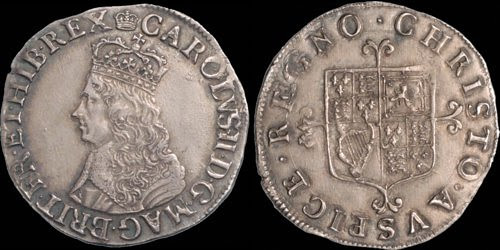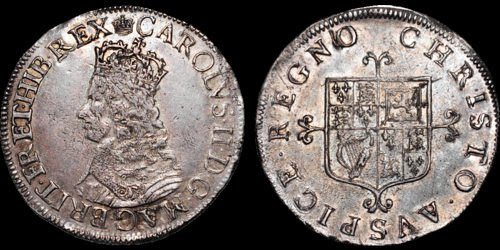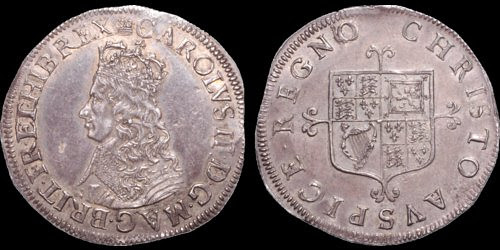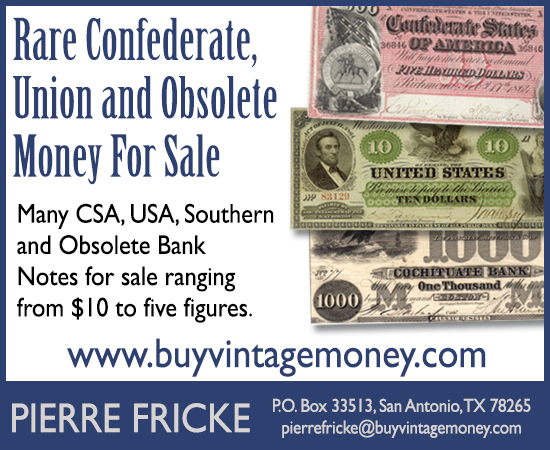
PREV ARTICLE
NEXT ARTICLE
FULL ISSUE
PREV FULL ISSUE
ON CONDITION, DAMAGE, AND PRICEWe don't typically discuss grading or valuation, but here's an interesting article by Allan Davisson on the issues involved in triangulating an auction estimate for pieces that exhibit flaws that can detract from market value. Not an easy task. What do readers think? -Editor How do you value a rare coin with damage? This issue comes up fairly often in the process of cataloging coins for our sales. Damage reduces the value and makes price guides or auction history less relevant. One of the coins offered here illustrates the problem—an exceptional and undamaged portrait on a piece produced by one of the finest medallists of any era on a fresh flan but with clear damage in the field, the Thomas Simon portrait on the hammered shilling of Charles II soon after he returned from exile. We (Allan catalogued, Lief and Marnie consulted) looked at comparables, considered the overall quality of the piece with other examples and ultimately thought about the appeal of the piece in hand. And we came up with a value that we think takes into account the damage but also recognizes the quality of so much of the piece. So, a discussion of our thinking…. The grading/slabbing services handling an Uncirculated coin with a problem will give you a grade and a holder but not a number. Bends, bumps, brush marks—any of these are enough to cut deeply into the value of a coin. Grading services such as PCGS and NGC handle such things ("disqualifiers") tersely with a word or two: "cleaned," "tooled," "repaired." Then a "details" grade is given—"Unc details" for example. Normal wear does not draw such condemnation—the sorts of marks and wear that a piece incurs in circulation are in addition to the "details" grade. Most published price guides in the United States define their columns of values by these numbers. The "disqualifiers" range from trivial to terrible. No price guide could cover such a range of issues. The classic, non-slabbed approach to grading involves a letter grade and, typically, a comment about any unusual wear and tear (if any) aspects of a piece. A careful description can provide more detail than the single word approach. For example, any indication of a hairline on a coin brings out the "cleaned" designation for a grading service. A written description can be more specific about the extent of the hairlines. But the point of this brief essay is to deal with the next—and arguably more significant question—what is the effect of damage on the value of the piece? The simple answer is that there is no simple answer (unless desirability is based only on an unsullied numerical grade, but that is a topic for another day). The shilling in question: When Charles II returned from exile to England the most recent coinage was the plain Commonwealth coinage with all its anti-royal symbolism. Within a month after his entry into London Charles ordered a new coinage with his image. This was a short-lived series. Coining methodology was in transition. Though Thomas Simon would have preferred to use the new technology of the mill, there was not time to set up the machinery and he quickly produced this elegant portrait for dies for hammered coinage. By the end of 1660 this new coinage was minted. The lack of a mark of value on this issue was not well-received so within a year a second hammered issue appeared briefly followed by a third issue with both the value in the field and an inner circle of beading. By February or March of 1663 milled coinage was produced and John Roettier's artistry replaced Simon's. The portrait remained through the series. The practical question when cataloging this sale was how to value a piece with an excellent portrait and fully struck clear legends. But there is a problem in the field to the left of the portrait. The damage is obvious but the portrait is intact. The surfaces of the coin are good metal, the toning is pleasing. Three examples we have handled plus one piece sold by DNW in London last December provide some comparisons. This is the lot in our current sale, estimated at $4000 with an opening value of $3200. It is an appealing piece with a particularly well struck image and legend on good silver with a delightful old tone. An example without damage sold for £7500 plus 24% (US$12,500) in DNW's December 2020 sale. "Very slightly double-struck, otherwise extremely fine and virtually as made, attractive grey tone over proof-like fields with underlying bloom, an exceptional specimen, very rare." (£4000-£5000) The legend is not quite as clear and the surface seems a bit dull judging by the photograph. DNW did not respond to my request for permission to use their published image of this particular piece. You can see it on their site here: https://www.dnw.co.uk/auction-archive/lot-archive/lot.php?lot_uid=362885 We sold this example in Auction 32 (2013) for $7000. "Extremely Fine, attractive old toning; full even strike." The legend is clear but not as clear of the edge as one might prefer, and the underlying iridescence somewhat visible on the DNW piece and more visible on the current sale piece is lacking. This example was sold by us in E-Auction 34 (2020) for $3000. "Extremely Fine, choice coin with attractive light toning over fresh surfaces, some obverse metal surface not fully annealed on the flan before striking." This piece had much going for it but the quality of the image was compromised by the roughness in the metal flan. Some of the annealing failure is evident if you look closely at the fields. The portrait has roughness as well. The price seemed fair—compromises on the portrait but a very presentable flan, clear legends, centering that preserves all the beading around the rim, a five figure coin if only all the portrait detail were present. This is the Montagu (1896, lot 746) specimen, described as "extremely fine and rare." This is certainly one of the finest known with claims to the finest. Montagu was known for his fierce efforts to have only the best as he formed his historic collection in the late 19th century. In the current market it would not be unreasonable to estimate it at $20,000. It has a pedigree that goes well back into the 19th century. (We handled this in the late 1990's.) Given all this information, what is this piece with a flan problem not affecting the portrait really worth? If not for the bend, the $12,500 the DNW piece achieved would suggest a value in the same range or possibly more given the quality of the metal and the toning. Other than the damage, everything about the piece is appealing and choice. But in this era where value is so dependent on condition the effect on value is significant. So, the number we finally determined to be a fair valuation in this era of such a strong focus on condition is a third of the recent price achieved in the December London sale.
For more information on the Davisson's sale, see:
Wayne Homren, Editor The Numismatic Bibliomania Society is a non-profit organization promoting numismatic literature. See our web site at coinbooks.org. To submit items for publication in The E-Sylum, write to the Editor at this address: whomren@gmail.com To subscribe go to: https://my.binhost.com/lists/listinfo/esylum All Rights Reserved. NBS Home Page Contact the NBS webmaster 
|

